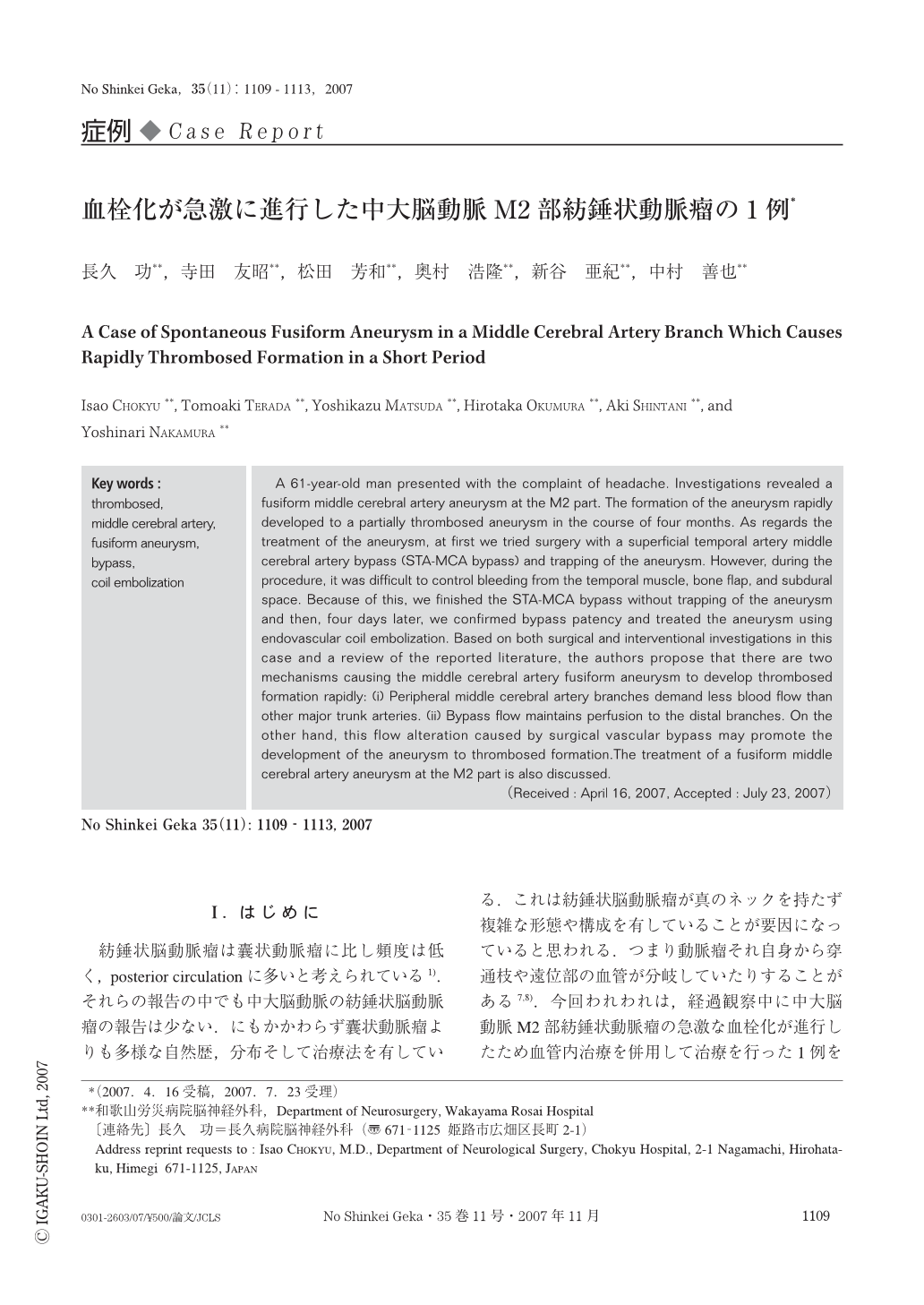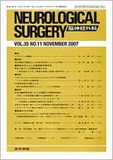Japanese
English
- 有料閲覧
- Abstract 文献概要
- 1ページ目 Look Inside
- 参考文献 Reference
Ⅰ.はじめに
紡錘状脳動脈瘤は嚢状動脈瘤に比し頻度は低く,posterior circulationに多いと考えられている1).それらの報告の中でも中大脳動脈の紡錘状脳動脈瘤の報告は少ない.にもかかわらず嚢状動脈瘤よりも多様な自然歴,分布そして治療法を有している.これは紡錘状脳動脈瘤が真のネックを持たず複雑な形態や構成を有していることが要因になっていると思われる.つまり動脈瘤それ自身から穿通枝や遠位部の血管が分岐していたりすることがある7,8).今回われわれは,経過観察中に中大脳動脈M2部紡錘状動脈瘤の急激な血栓化が進行したため血管内治療を併用して治療を行った1例を経験したので,動脈瘤内の急激な血栓化が進行した機序とその治療法について文献的考察を加えて報告する.
A 61-year-old man presented with the complaint of headache. Investigations revealed a fusiform middle cerebral artery aneurysm at the M2 part. The formation of the aneurysm rapidly developed to a partially thrombosed aneurysm in the course of four months. As regards the treatment of the aneurysm, at first we tried surgery with a superficial temporal artery middle cerebral artery bypass (STA-MCA bypass) and trapping of the aneurysm. However, during the procedure, it was difficult to control bleeding from the temporal muscle, bone flap, and subdural space. Because of this, we finished the STA-MCA bypass without trapping of the aneurysm and then, four days later, we confirmed bypass patency and treated the aneurysm using endovascular coil embolization. Based on both surgical and interventional investigations in this case and a review of the reported literature, the authors propose that there are two mechanisms causing the middle cerebral artery fusiform aneurysm to develop thrombosed formation rapidly: (i) Peripheral middle cerebral artery branches demand less blood flow than other major trunk arteries. (ii) Bypass flow maintains perfusion to the distal branches. On the other hand, this flow alteration caused by surgical vascular bypass may promote the development of the aneurysm to thrombosed formation.The treatment of a fusiform middle cerebral artery aneurysm at the M2 part is also discussed.

Copyright © 2007, Igaku-Shoin Ltd. All rights reserved.


